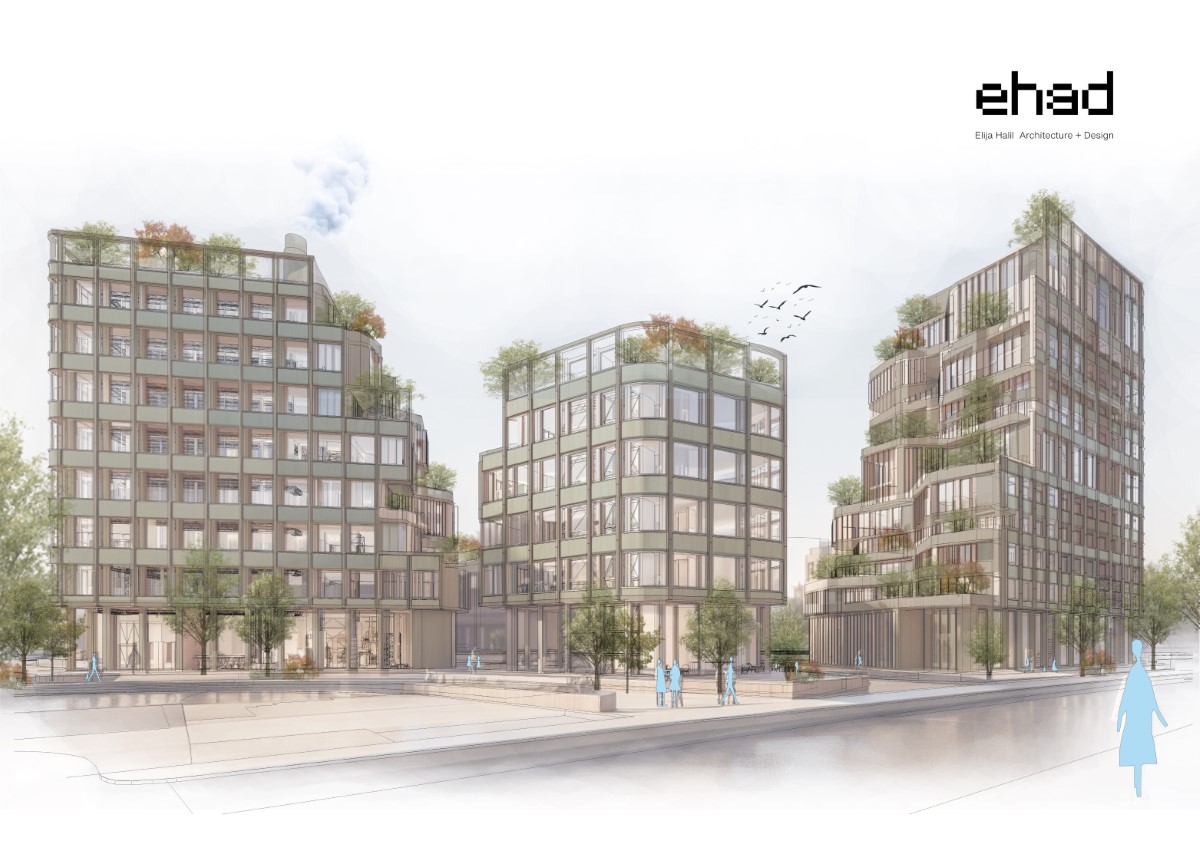As urban centres continue to expand and densify, the industries that once powered them are being systematically relocated to the peripheries. This shift has not only created a spatial disconnect between production and consumption but has also stripped cities of their infrastructural self-sufficiency.
In response to this growing urban imbalance, architectural designer Elija Halil presents The Living Factory, a bold architectural proposal that brings back clean industry, material innovation, and sustainable living directly into the core of the city. Located along Deptford Creek in southeast London, near the historical Deptford Power Station, The Living Factory repositions the city itself as an engine for regenerative systems. Rather than hiding infrastructure behind zoning boundaries or treating sustainability as a cosmetic feature, this three-tower development embodies a fully integrated ecosystem. It is designed not only to function sustainably but to actively improve the air, energy resilience, and material flows of its surroundings.

Each of the three towers within The Living Factory performs a critical yet distinct function, working in concert as a vertical industrial landscape. At the heart of the complex is the Energy Production Tower. This tower houses the cultivation and harvesting of microalgae, which are grown within the building envelope using light-responsive environments and then processed into biofuel on site. This clean, renewable energy source is used to power the entire complex. Biofuel, unlike fossil fuels, offers a closed-loop cycle. It emits significantly fewer greenhouse gases, is biodegradable, and can be produced with minimal environmental disruption. By producing energy, the building reframes energy not as an external utility but as an active architectural function.
Adjacent to this tower is the Material Production Tower, where the byproduct of the biofuel process is. The remaining algae biomass is transformed into a valuable construction resource. This leftover biomass is used to create moulded algae panels that are fabricated within the building itself. These panels are then installed on the building’s facade, particularly along the street-facing elevations where air pollution is highest. The panels are designed to absorb carbon dioxide from the surrounding atmosphere, functioning as active air filters. The visual identity of the building is therefore not decorative but performative. Its living surfaces reflect a building that is participating in the life of the city, purifying the air in real time.
The third component of the complex is the Residential Tower. Housing a variety of unit types, this tower offers high-quality urban living supported directly by the building’s energy and environmental systems. Due to the narrow and often overshadowed character of the surrounding street, the massing of the residential tower adopts a stepped, terraced form. This creates generous outdoor spaces for each unit and allows sunlight to penetrate deep into the interiors.
The staggered profile not only responds to solar access but establishes a rhythm of terraces that encourage planting, social interaction, and personal outdoor life. The form of the building is thus shaped by the environmental realities of its site, ensuring light, air, and space are available even in a dense urban setting.
Structurally, The Living Factory is built primarily from mass timber. The structural frame comprises gluelaminated timber columns and beams, while the floor plates are constructed from cross-laminated timber panels. This timber system significantly reduces the building’s embodied carbon while providing a warm and human-scaled interior atmosphere. To accommodate the height and complexity of the towers, a supplementary steel structure is introduced in key areas to enhance stability and load distribution. The hybrid timber steel construction system achieves both strength and sustainability, setting a precedent for large-scale timber applications in dense cities.
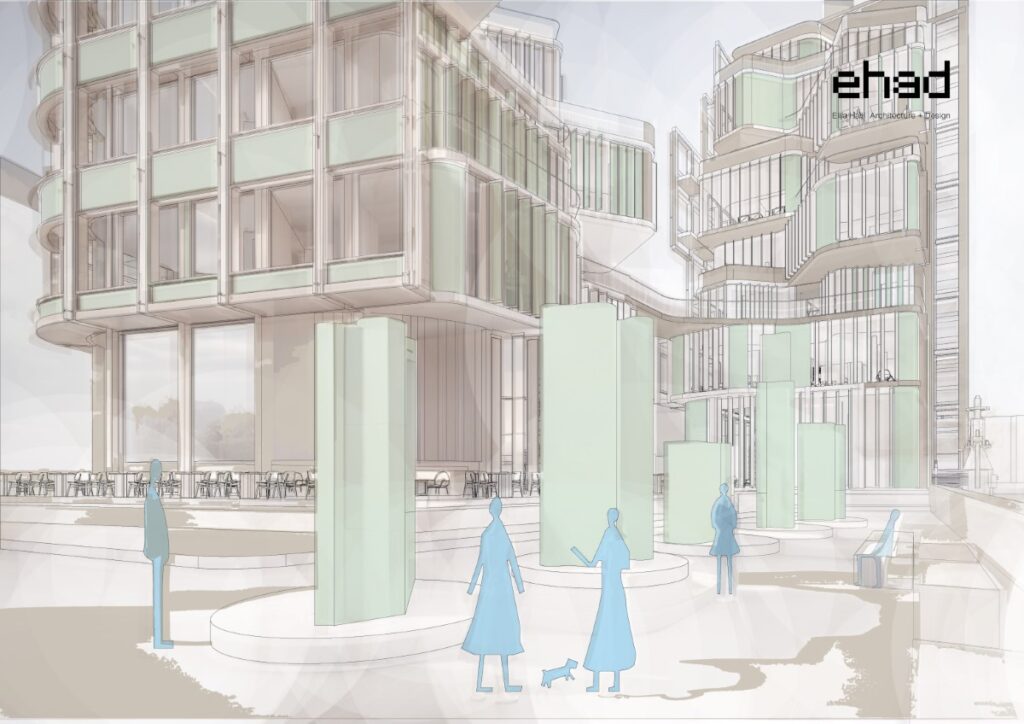

Aesthetically and conceptually, the project is influenced by several architectural precedents. The cascading terraces of the residential tower reference the stepped massing and green integration of MVRDV’s The Valley. The interlocking programs and civic ambition echo the spatial intelligence of London’s Economist Building. The vegetated facades and ecological intent take inspiration from Bosco Verticale in Milan. Yet while these projects offer formal and symbolic cues, The Living Factory pushes further by embedding function and performance into every element of its design.
This is not simply a green building in appearance but a working ecological engine. What distinguishes The Living Factory is its complete cycle of interdependence. Algae are cultivated to produce biofuel. The byproduct of that energy process is used to make CO₂-absorbing panels. Those panels then clean the very air the residents breathe. In this way, energy, material, and habitation are no longer discrete systems but overlapping components in a circular model. The building does not extract resources from the city. It generates, recycles, and reinvests them.
Beyond its specific site in Deptford, the project is envisioned as a replicable and scalable prototype. As global cities face increasing environmental pressures, The Living Factory offers a new urban typology, one that blends clean industrial production with housing and material research into a single, integrated form. This is a model for cities that do not hide their infrastructure but embrace it. A model where energy is not just consumed but produced and where architectural expression is grounded in performance.
Elija Halil’s work explores the intersections between architecture, ecology, and production. The Living Factory marks a significant step in that exploration, presenting a building that redefines the role of architecture in the age of climate urgency. It is not simply a place to live or work, but a living system in itself, a prototype for a cleaner, more resilient urban future.
Gallery:
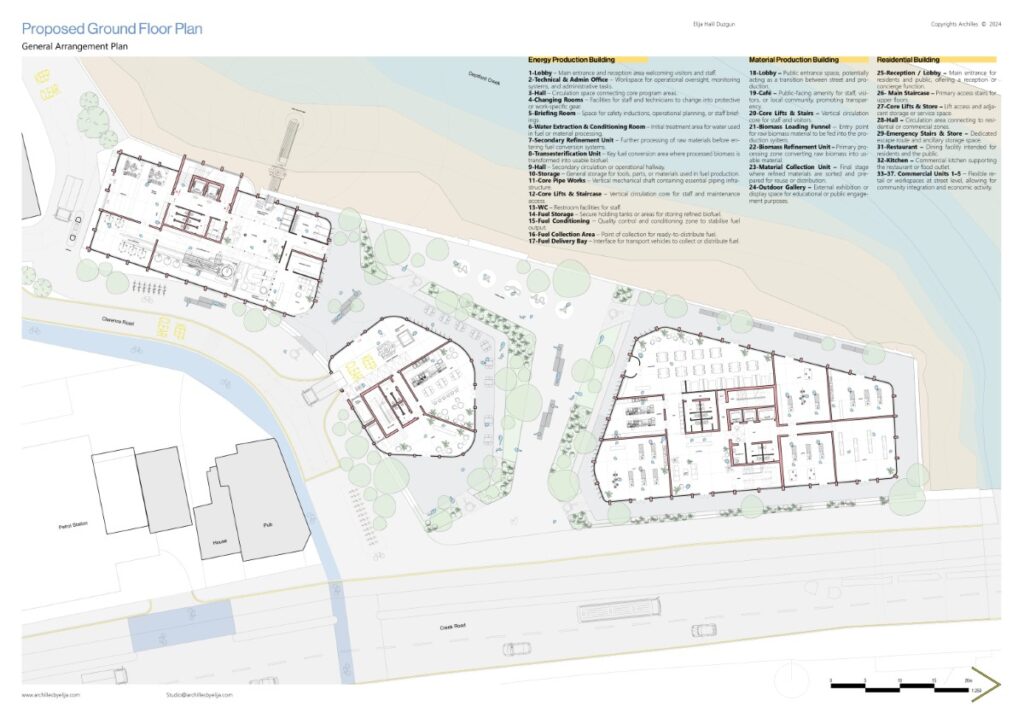
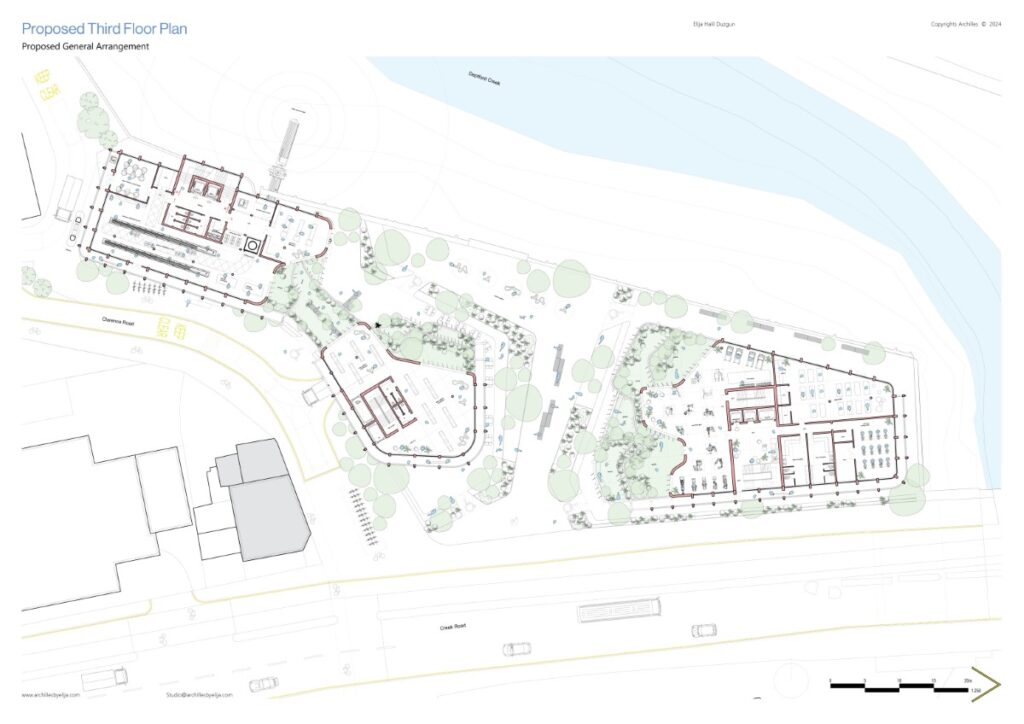

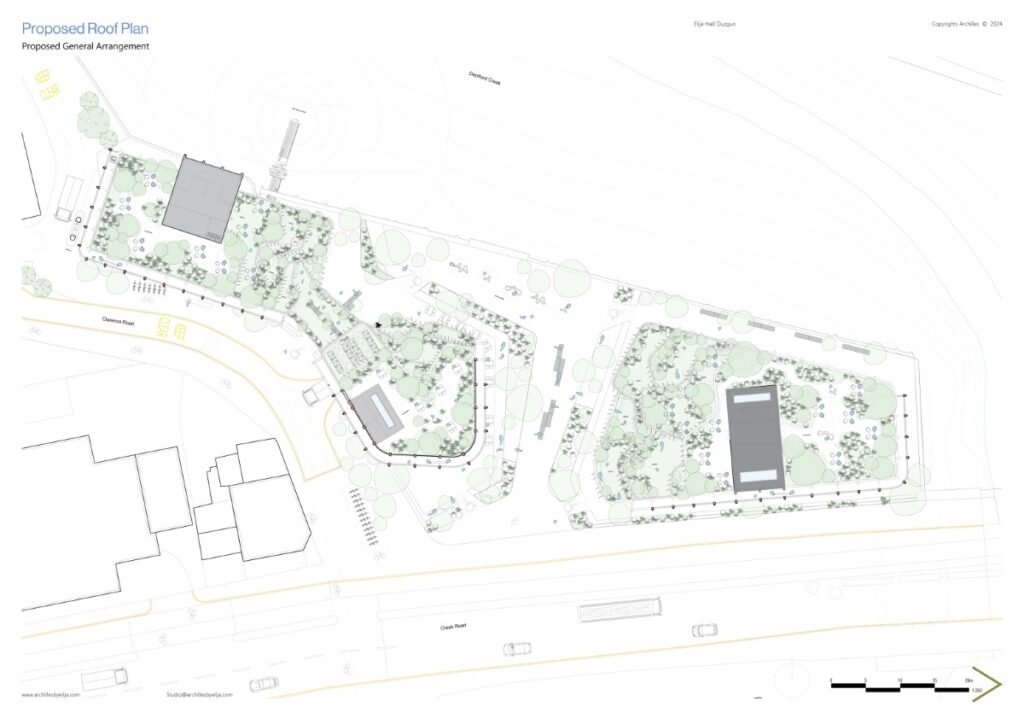
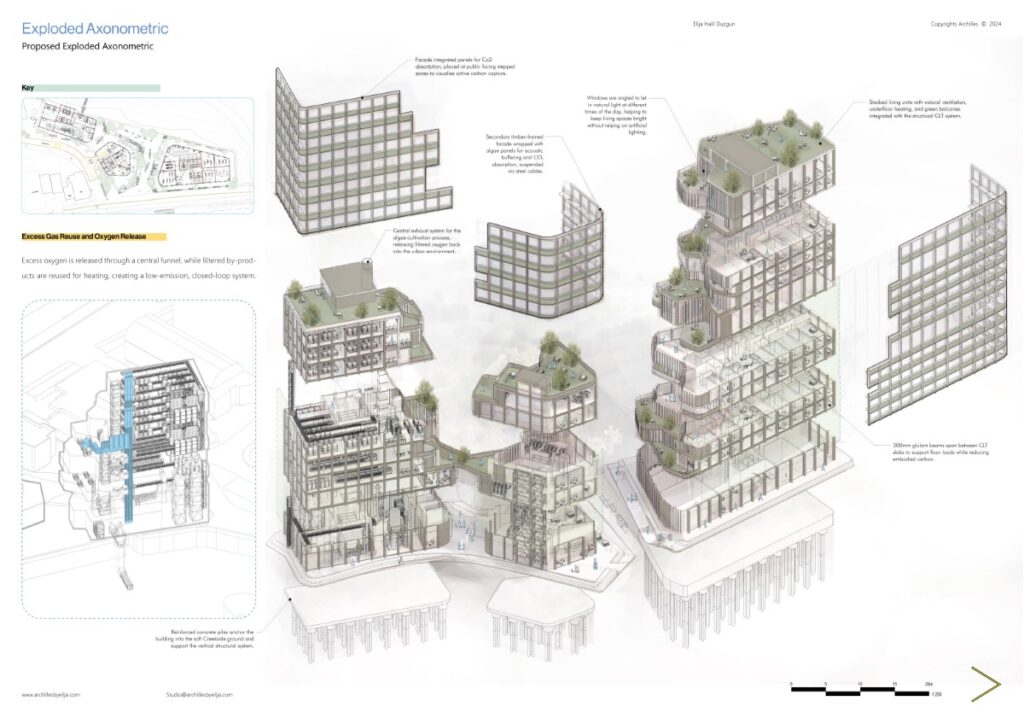


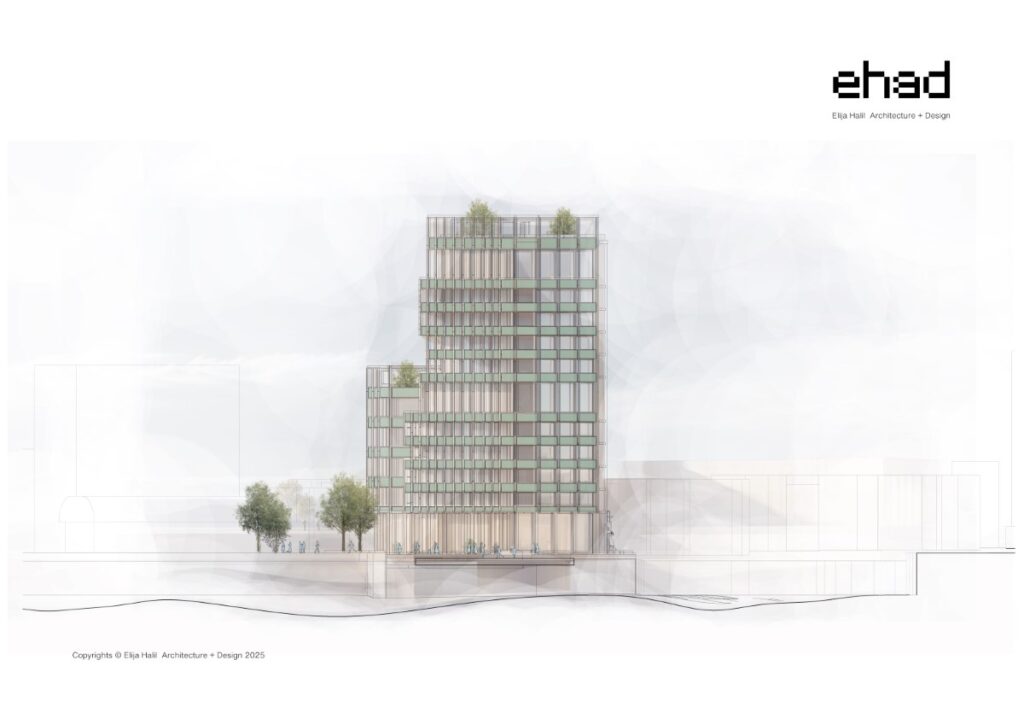
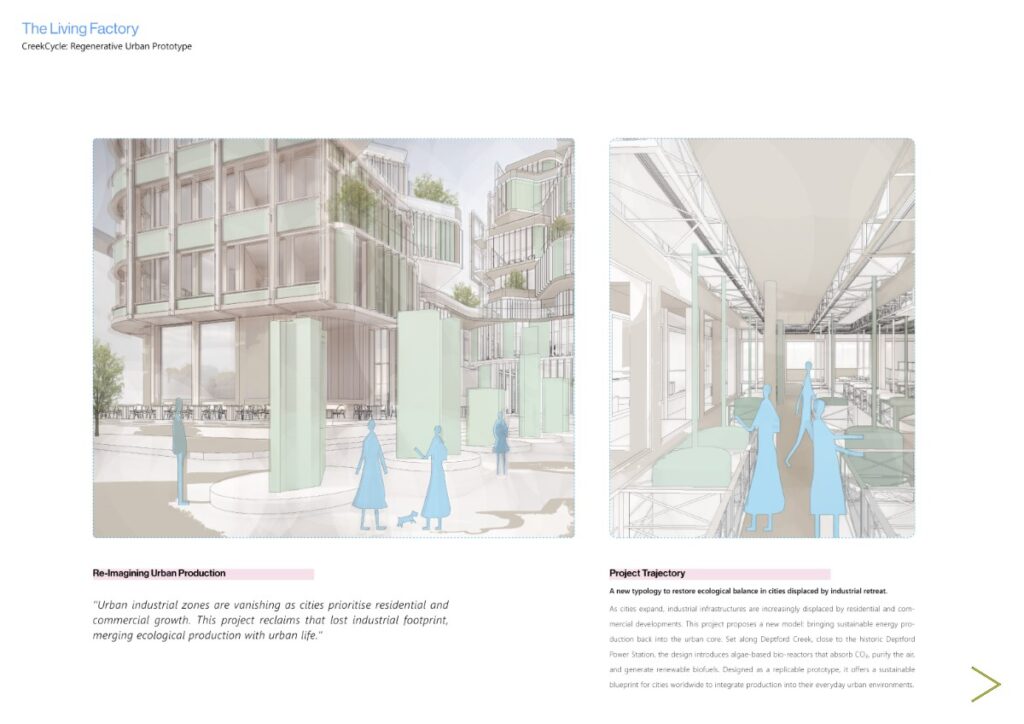


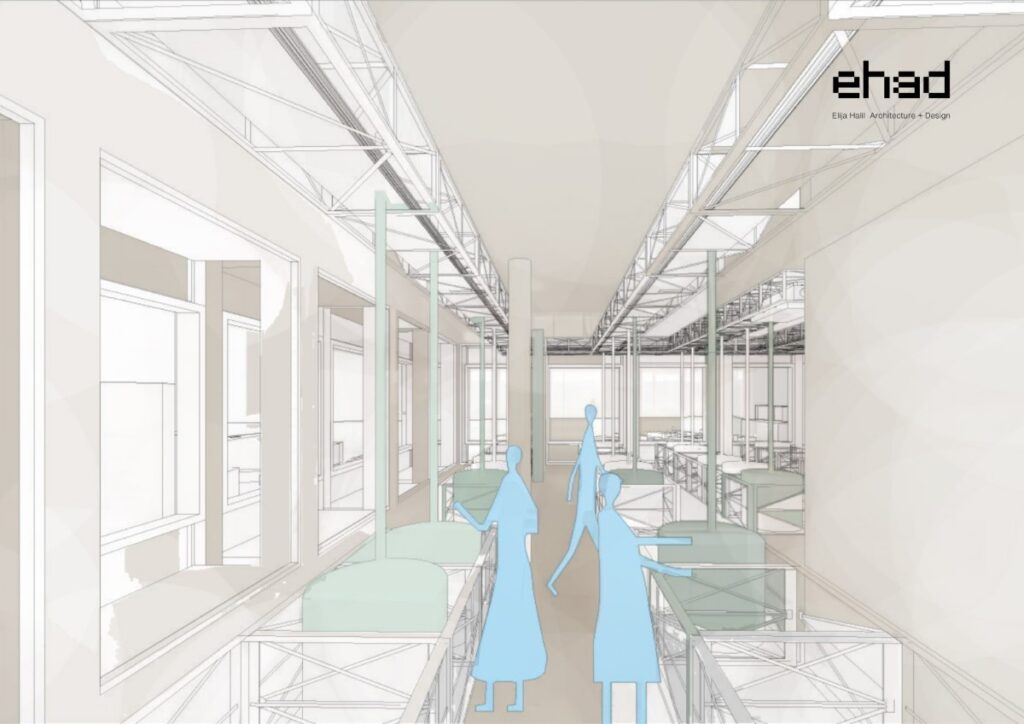
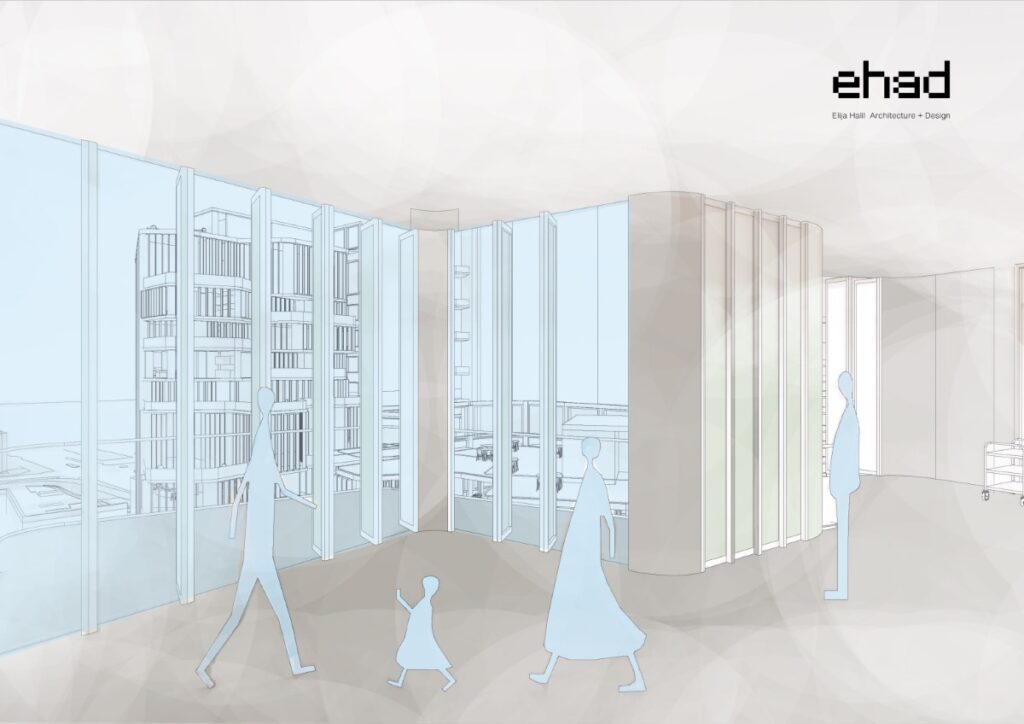
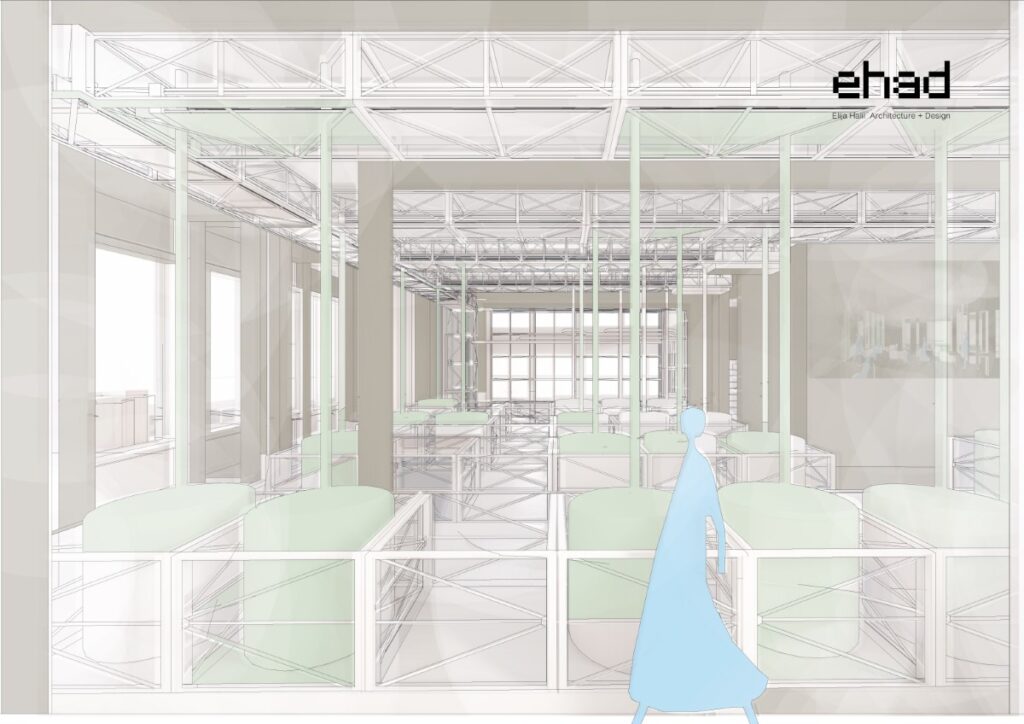
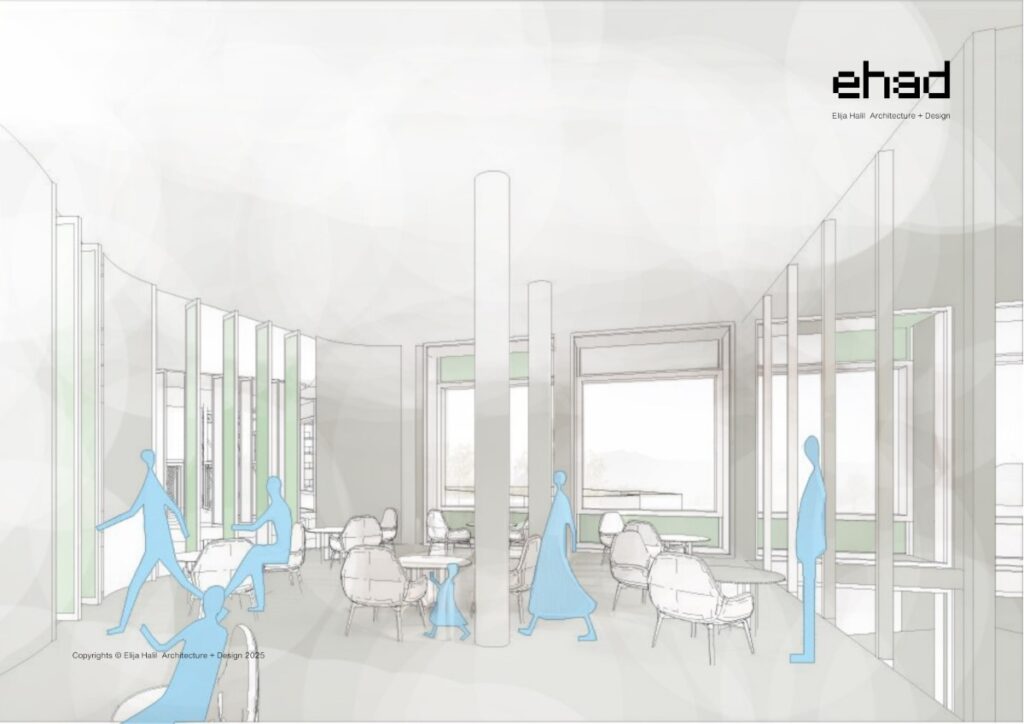


Project Details:
Name: The Living Factory
Location: Deptford Creek, London, United Kingdom
Built area: Approx. 12,000 sq. mt.
Site area: Approx. 3,500 sq. mt.
Year: 2025
Typology: Industrial Architecture / Mixed-use
Designed by: Elija Halil Architecture + Design (EHAD)
Design Team: Elija Halil & Kiln + Rein
Visualisation: Elija Halil
Tools used: Rhino, AutoCAD, Vray, Adobe Photoshop, BIM
Collaborators: Kiln + Rein
Materials: Glulam, cross-laminated timber (CLT), structural steel, algae-moulded
panels


